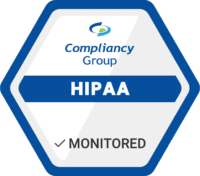IT Security Policy Template for Risk Analysis and Risk Management
An IT Security Policy Template document is a document that an organization uses to state its IT security policy. The IT security policy template document can be a policy covering all facets of a business’s security compliance. A provider can also use a series of IT Security Policy Templates to create topic-specific policy documents. One IT security policy template is a Risk Analysis and Risk Management IT security policy template. The importance of having a Risk Analysis and Risk Management IT security policy template is discussed below.
Why Do I Need an IT Security Policy Template?
If you are a HIPAA covered entity or business associate, you must comply with the HIPAA Security Rule. Compliance consists of developing policies and procedures to ensure electronic protected health information (ePHI) is kept confidential, is readily available to those who need it, and is protected from improper alteration or destruction.
Having an IT security policy template for risk analysis and risk management is more important now than ever. A recent Black Book Market Research study, which surveyed 2,464 security professionals from 705 healthcare organizations, was conducted to assess whether healthcare providers have security gaps or vulnerabilities that leave them susceptible to healthcare data breaches. The results of the study are eye-opening. The researchers determined that 75% of hospitals, health systems, and other covered entities are unprepared to handle a cyberattack should they be targeted by a threat actor.
In addition, the Department of Health and Human Services (HHS), in December of 2020, issued the long-awaited results of its Phase 2 audits. HHS conducted audits in 2016 and 2017 that reviewed selected healthcare entities and business associates for compliance with certain provisions of the HIPAA Privacy, Security, and Breach Notification Rules. HHS found that most covered entities and business associates had failed to implement the HIPAA Security Rule requirements for risk analysis and risk management.
How Do I Create an IT Security Policy Template?
Having and implementing an IT Security Policy Template for risk analysis and risk management is critically important to address the security gaps and vulnerabilities found in the Black Book Market Research study and the HHS audit report.

The risk analysis and risk management requirement is part of the Security Rule administrative safeguard requirements. These requirements include implementation of a security management process standard. Under this standard, covered entities and business associates must implement policies and procedures to prevent, detect, contain, and correct security violations.
The administrative safeguard regulation contains specifications for how an organization is to implement these policies and procedures. One specification requires that an organization perform a risk analysis, and another requires that an organization perform risk management.
The IT Security Policy Template for risk analysis and risk management should contain the following definitional information about vulnerabilities, threats, and risk.
- Vulnerabilities are weaknesses or gaps in an organization’s security program that can be exploited to gain unauthorized access to ePHI. An example of a vulnerability is not having your data encrypted.
- Threats are things that can exploit these vulnerabilities and damage or destroy ePHI. Threats include malware, phishing schemes, and viruses.
- Risk is the potential for damage or destruction to ePHI as a result of a threat exploiting a vulnerability.
The three terms can be used in a sentence: If you do not encrypt your data (a vulnerability), there is a risk your ePHI may be damaged as a result of a ransomware attack (a threat).
A risk analysis IT security policy template should cover the steps of a risk analysis. These include:
- Collecting Data
- Identifying and Documenting Potential Threats and Vulnerabilities
- Assessing Current Security Measures
- Determining the Likelihood (Probability) of Threat Occurrence
- Determining the Potential Impact of Threat Occurrence (i.e., how badly would the provider’s business be impacted by a threat actually occurring)
- Determining the Level of Risk
From this information, a provider develops a risk analysis report. In the report, risks with both the highest probabilities AND the highest impact are ranked highest on the list, while risks with the lowest probabilities and impacts are ranked lowest (at the bottom).
The risk management IT security policy template must contain a mitigation (or loss prevention) strategy for each item ranked on the list. A mitigation strategy is a series of steps designed to limit the probability and impact of the risk. If the risk to be guarded against is, for example, a malware attack, the strategy should contain steps designed to minimize the likelihood and impact of the attack.






